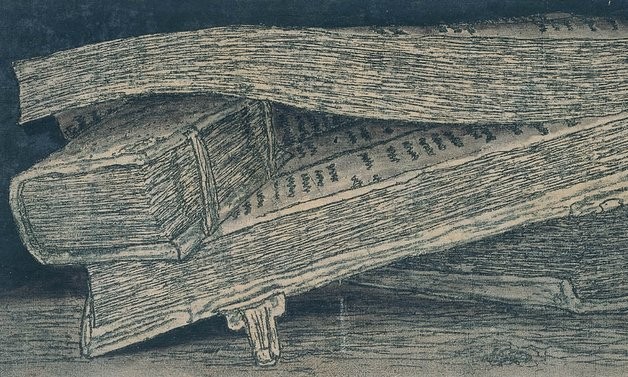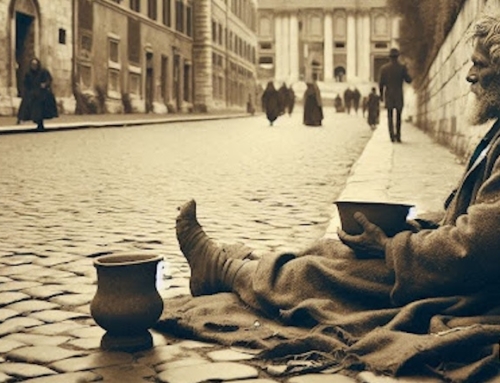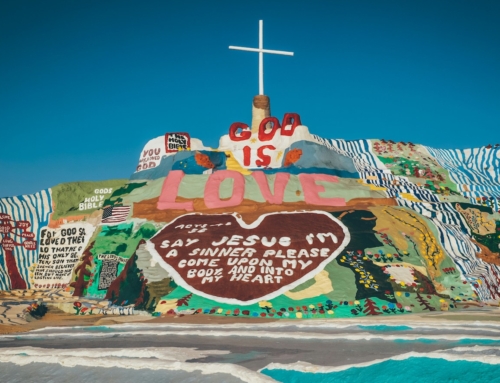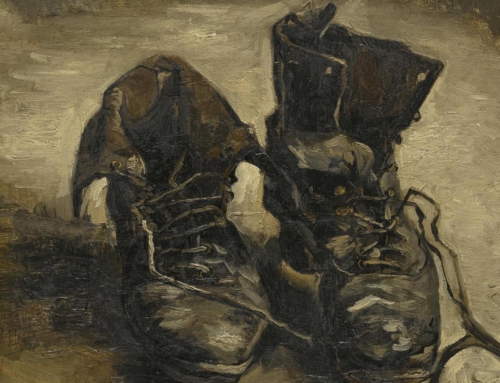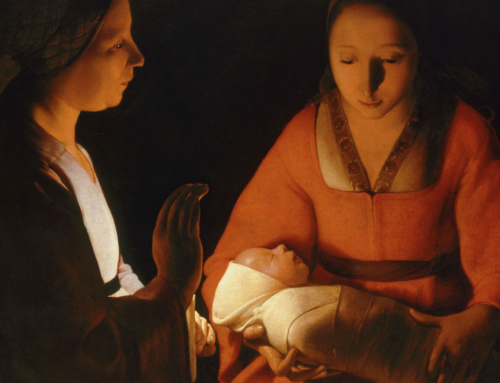Amidst the many innocuous actions of Pope Francis that have elicited the attention of the world, one particularly amusing example is the affair of the black briefcase. As the AP breathlessly reported the story on July 22, 2013, “Keeping to his example that the Catholic church must be humble, Francis carried his own black hand luggage. He even kept holding it with his left hand while he used his right to shake hands with some of the VIPs who turned out to wish him well and while he climbed the stairs to the jet’s entrance.” A week later, when asked by a journalist what was in the now famous briefcase, Pope Francis responded with characteristic good humor:
It wasn’t the key for the atom bomb! Well! I was carrying it because that’s what I’ve always done. When I travel, I carry it. And inside, what was there? There was a razor, a breviary, an appointment book, a book to read, I brought one about Saint Thérèse, to whom I have a devotion. I have always taken a bag with me when travelling—it’s normal. But we must be normal…I don’t know…what you say is a bit strange for me, that the photograph went all over the world. But we must get used to being normal. The normality of life.
The attention of the public may have been caught by the briefcase, but I am more intrigued by the breviary. As a cleric and religious, Pope Francis is obliged to recite the Divine Office (also known as the Liturgy of the Hours), a form of Catholic prayer that is contained in a book frequently referred to as a “breviary.” The breviary is a collection of psalms, prayers, scriptural readings, and writings of the Fathers and saints of the Church. These different elements are arranged to be sung or read at different times throughout the day in a cycle that parallels the different seasons and feasts observed in the Mass. The recitation of the breviary immerses the reader into the Bible and the spiritual tradition of the Church, allowing the reader to be nourished not only by the readings and prayers of the Mass but also by a whole constellation of psalms and prayers that extend the praise and thanksgiving of the Mass throughout the whole day.
For Pope Francis, reciting the breviary, like carrying a briefcase, is something normal—after all, he’s been doing it for more than fifty years! In addition to its being part of the normality of life, the Pope has indicated that praying the Divine Office is something he enjoys: “I pray the breviary every morning. I like to pray with the psalms.”
On a deeper level, however, it is possible to discern ways in which the Pope’s recitation of the breviary has profoundly marked his theological imagination. Two examples from Pope Francis’s interview with a Jesuit magazine editor, undertaken on August 19, 2013, bear this out.
In the first case, a question from the interviewer Fr. Antonio Spadaro prompted Pope Francis to reach for his breviary to provide the basis for his answer. As Fr. Spadaro recounts:
I ask Pope Francis about the enormous changes occurring in society and the way human beings are reinterpreting themselves. At this point he gets up and goes to get the breviary from his desk. It is in Latin, now worn from use. He opens to the Office of Readings for Friday of the 27th Week in Ordinary Time and reads me a passage from the Commonitorium Primum of St Vincent of Lerins: “Even the dogma of the Christian religion must follow these laws, consolidating over the years, developing over time, deepening with age.”
In addition to the significant fact that the Pope himself gets up to get the breviary (rather than ringing for Jeeves?), this is a fascinating example of the way in which Pope Francis interacts with the liturgy. Having read this passage from St. Vincent each year, Francis is able to call it to mind in response to a particular pastoral question. It was not that he had recited it recently—on August 19th Francis was still celebrating the 20th Week in Ordinary Time—but rather that he has become so familiar with the contents of the breviary that he is able to remember that this passage would be relevant for the question at hand and that it happened to fall within the volume he had on hand. This is a tremendous indication of the depth to which Francis has engaged with the treasures contained within the breviary.
A more subtle example of the influence of the breviary on Pope Francis is found in his choice of his episcopal motto, Miserando atque Eligendo. In his interview with Fr. Spadaro, Pope Francis links this motto with his recognition of his status as a sinner:
I am a sinner whom the Lord has looked upon. … I am one who is looked upon by the Lord. I always felt my motto, Miserando atque Eligendo [By Having Mercy and by Choosing Him], was very true for me.
As Fr. Spadoro explains, Francis’s motto “is taken from the Homilies of Bede the Venerable, who writes in his comments on the Gospel story of the calling of Matthew: Jesus saw a publican, and since he looked at him with feelings of love and chose him, he said to him, ‘Follow me.'” According to Vatican Radio, “this homily, which focuses on divine mercy and is reproduced in the Liturgy of the Hours on the Feast of Saint Matthew, has taken on special significance in the Pope’s life and spiritual journey. In fact it was on the Feast of Saint Matthew in 1953 that a young seventeen year-old Jorge Bergoglio was touched by the mercy of God and felt the call to religious life in the footsteps of Saint Ignatius of Loyola.” Each year, then, Pope Francis has the opportunity to read again these words which have so transfixed him as to choose them as his representatives.
Pope Francis’s engagement with the Divine Office is an inspiring example of the fruitfulness that comes from a patient and faithful participation in the liturgy of the Church. Let us pray that more people may move beyond their fascination with the Pope’s briefcase, and come to know the treasures that lie within.
✠
Image: Hercules Seghers, Piles of Books

